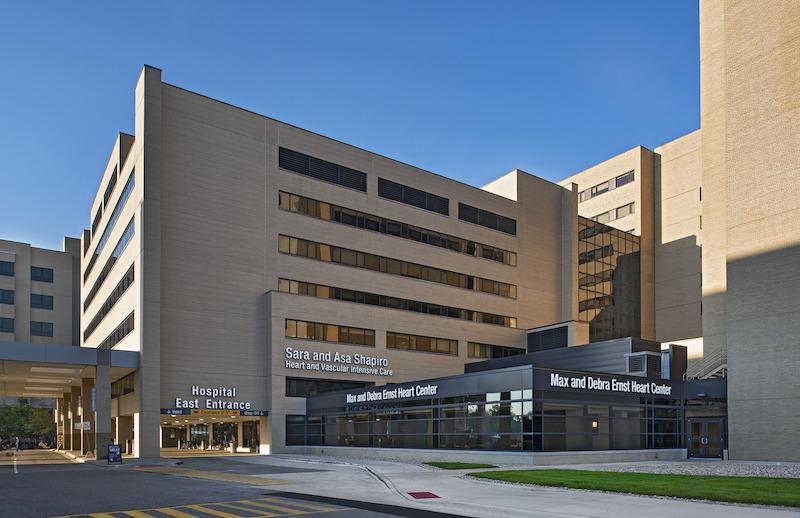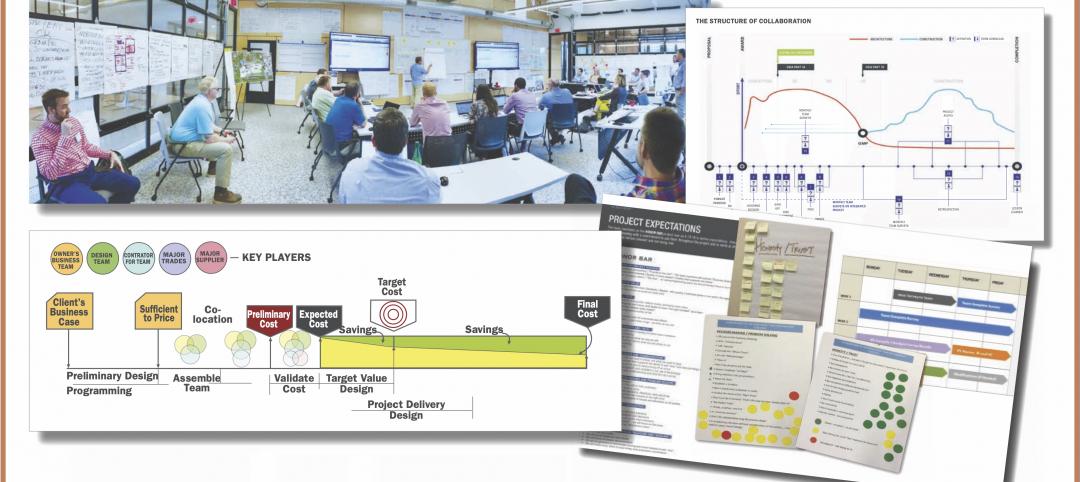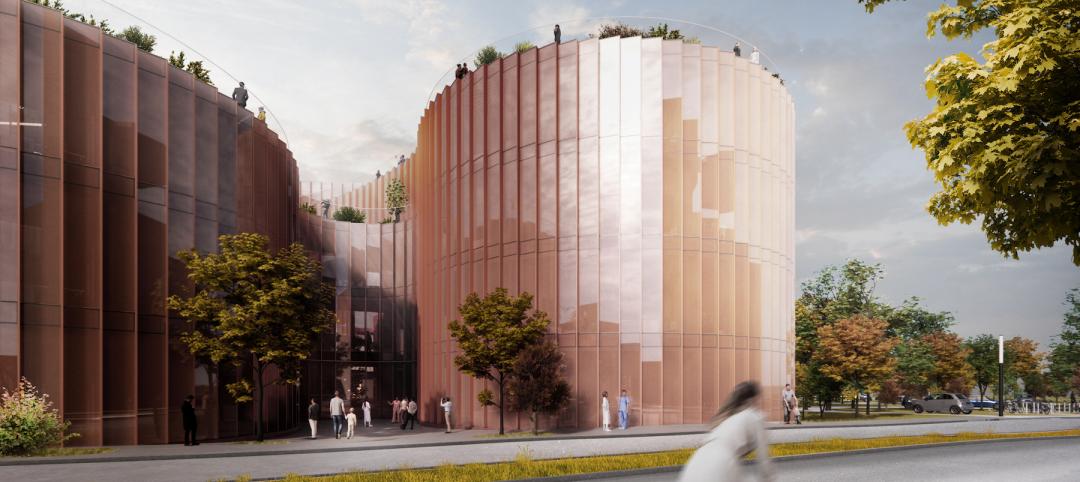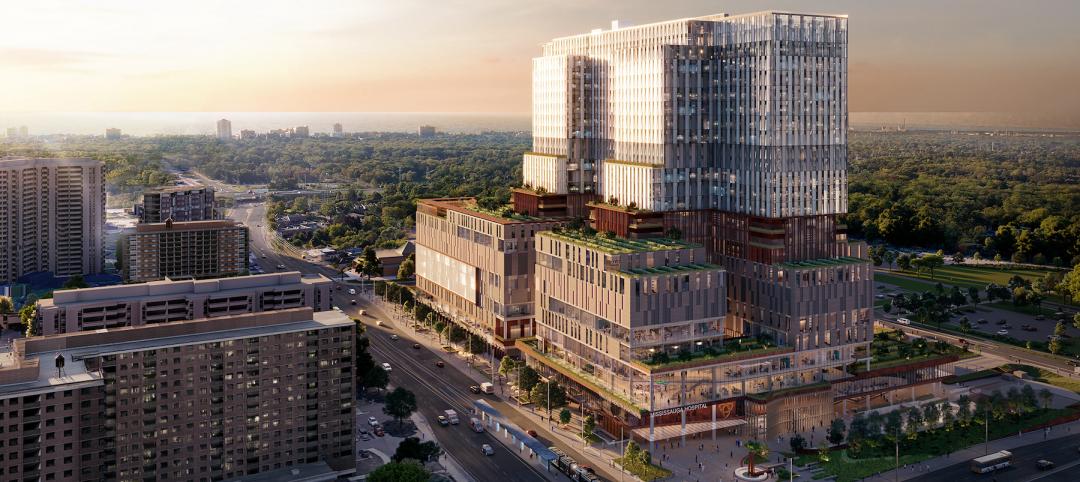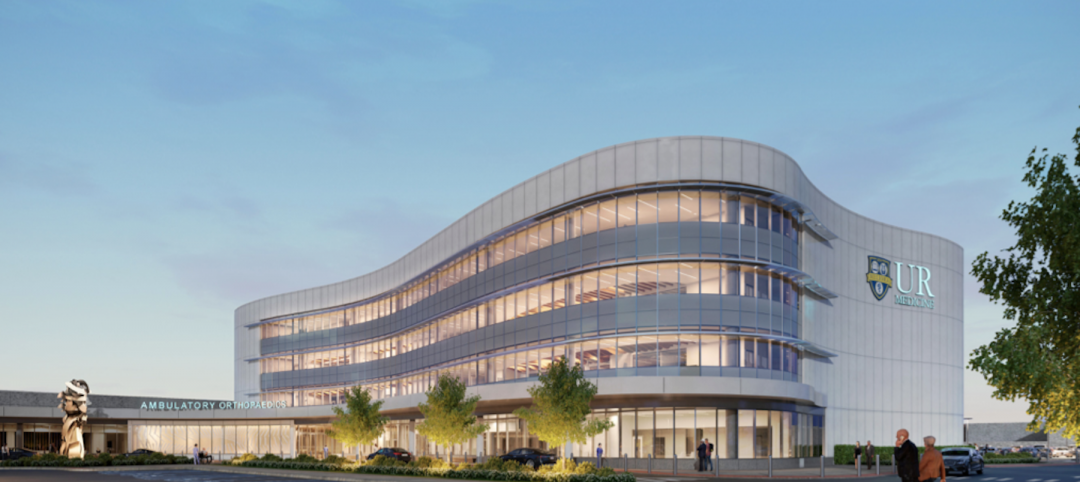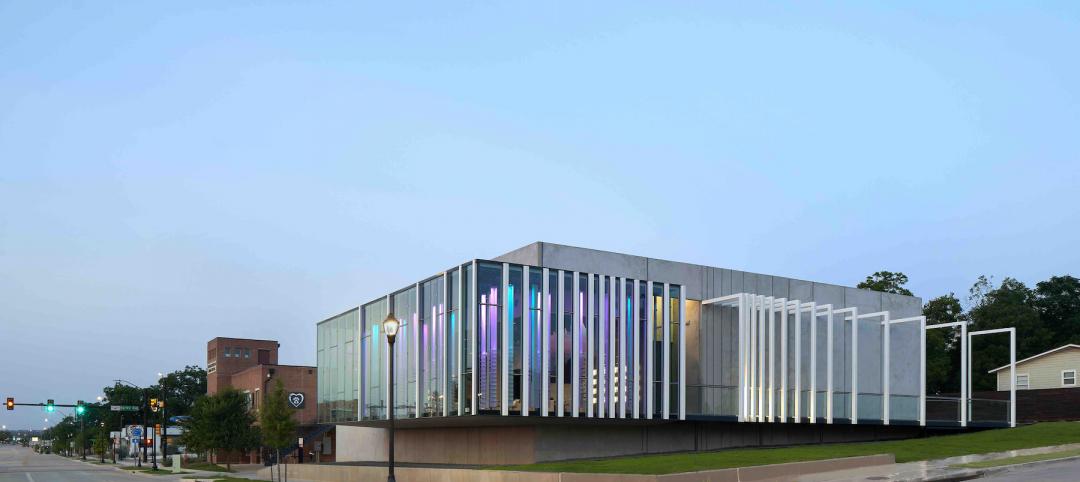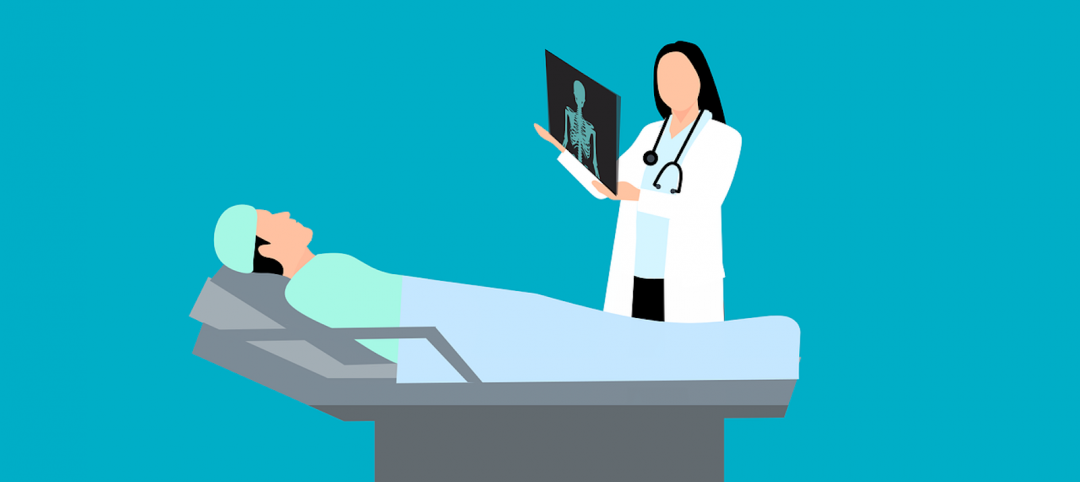This year, nearly 1.1 million Americas are expected to suffer “coronary events,” according to an American Heart Association report released earlier this year. The good news is that the number of deaths caused by cardiovascular heart failure or coronary heart disease has been falling steadily over the past several years.
That decline corresponds with the growth of heart failure clinics that have been popping up across the country, not only on academic campuses such as Stanford, Northwestern, Johns Hopkins, the University of Iowa and the University of Michigan, but also at major medical centers like Mayo Clinic (which has heart failure clinics in Arizona, Florida, and Minnesota), NYU|Langone Medical Center, and Cleveland Clinic.
Also see: 2019 Healthcare Giants Report: The ‘smart hospital’ is on the horizon
Add to that list the Max and Debra Ernst Heart Center, a $9 million, 14,000-sf facility that opened last month at Beaumont Hospital in Royal Oak, Mich. This addition, which is set up to treat 100 visitors per day, includes 12 patient care rooms, an echocardiogram room, a vascular room, a stress testing room, and two treatment rooms designed for outpatient medication infusion services.
The clinic is named after Max Ernst, the former Arbor Drugs COO, and his wife, who last year donated $5 million to the construction of the new heart failure center.
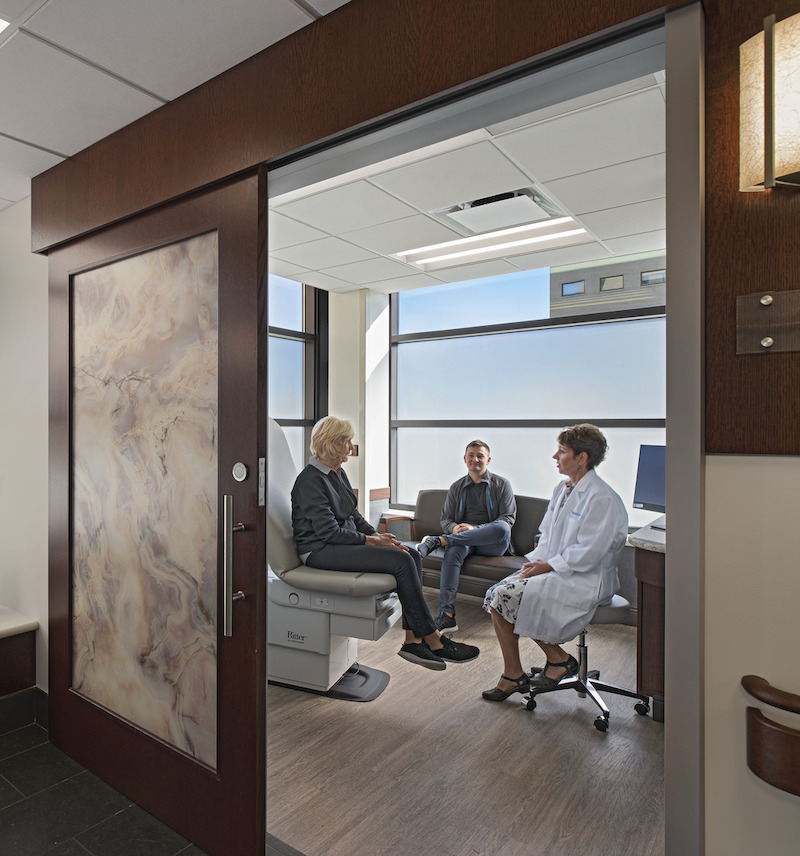 The clinic, with 12 patient rooms, is set up to treat up to 100 visitors per day.
The clinic, with 12 patient rooms, is set up to treat up to 100 visitors per day.
David Jaeger, Principal, Healthcare Studio Leader, Harley EIllis Devereaux (HED), this project’s primary design architect, talked about the “scalability” of the clinics for treating heart failure. “That’s been the case for Beaumont for many years,” adding that the new clinic is about expansion and branding.
He says his firm has had a “longstanding relationship” with Beaumont, dating back to 1997. HED has also done a number of heart centers for other clients; Jaeger says this has become something of a specialty for the firm. On the Beaumont project, HED was also the SE, ME, EE, and landscape architect. PEA Inc. was the CE. And Kasco Construction was the CM.
Heart failure clinics: More than a heart hospital
The goal of heart failure clinics, he explains, is to keep more patients out of emergency rooms. He made the point, however, that cardiology in general is not a growing service anymore for hospitals. “You rarely hear about open-heart surgery anymore,” he says, noting the clinicians are doing a much better job, and have better tools, to treat patients so they don’t need major surgery. “Cardiovascular clinicians have to think about population health in a different what to grow and expand their businesses.”
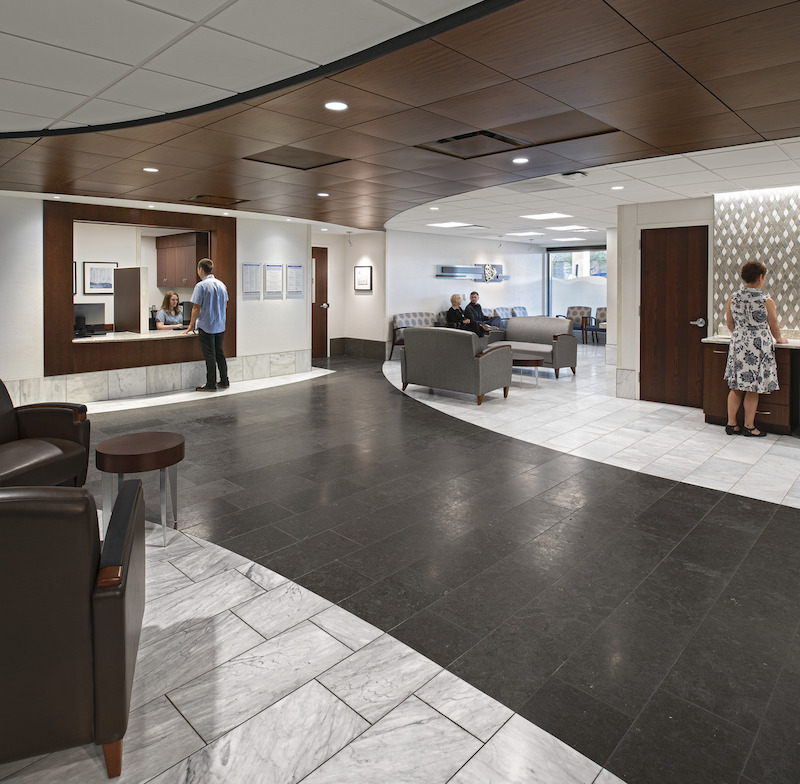 The clinic's glass facade lets in more natural light.
The clinic's glass facade lets in more natural light.
Jaeger says that this project was a challenge because the clinic needed to be wedged within five existing buildings on campus. It also needed to mediate radiation services below.
The precedent for heart failure clients that HED turned toward for its design, says Jaeger, was Duke University, which operates an advanced heart and lung failure clinic, a cardiology consult clinic, and a clinical research unit.
Beaumont is a 3 million-sf hospital, so patient access to the clinic was imperative. Located adjacent to the East Tower entrance of the hospital near the Ernst Cardiovascular Center that opened eight years ago, the clinic has its own entryway in close proximity to parking.
Jaeger also points out that, even though this campus’ buildings are mostly made from brick, HED specified a glass façade that wraps around the clinic addition, providing more natural light to patients and visitors.
Related Stories
Healthcare Facilities | Apr 14, 2022
Healthcare construction veteran creates next-level IPD process for hospital projects
Can integrated project delivery work without incentives for building team members? Denton Wilson thinks so.
Market Data | Apr 14, 2022
FMI 2022 construction spending forecast: 7% growth despite economic turmoil
Growth will be offset by inflation, supply chain snarls, a shortage of workers, project delays, and economic turmoil caused by international events such as the Russia-Ukraine war.
Laboratories | Apr 7, 2022
North Carolina's latest play for biotech real estate development
The Tar Heel State is among a growing number of markets rolling out the welcome mat for lab spaces.
Healthcare Facilities | Apr 7, 2022
Visibility breeds traffic in healthcare design
Ryan Companies has completed several healthcare projects that gain exposure by being near retail stores or office buildings.
Healthcare Facilities | Mar 25, 2022
Health group converts bank building to drive-thru clinic
Edward-Elmhurst Health and JTS Architects had to get creative when turning an American Chartered Bank into a drive-thru clinic for outpatient testing and vaccinations.
Projects | Mar 21, 2022
BIG-designed Danish Neuroscience Center will combine groundbreaking science and treatment
A first-of-its-kind facility, a new Danish Neuroscience Center in Aarhus, Denmark designed by BIG, will combine psychiatry and neuroscience under one roof.
Projects | Mar 18, 2022
Toronto suburb to build the largest hospital in Canada
A new hospital in Ontario will nearly triple the care capacity of its existing facility—becoming the largest hospital in Canada.
Projects | Mar 15, 2022
Old Sears store will become one of the largest orthopaedics outpatient facilities in the Northeast
A former Sears store in Rochester, N.Y., will be transformed into one of the largest orthopaedics outpatient facilities in the Northeast.
Projects | Mar 10, 2022
Optometrist office takes new approach to ‘doc-in-a-box’ design
In recent decades, franchises have taken over the optometry services and optical sales market. This trend has spawned a commodity-type approach to design of office and retail sales space.
Industry Research | Mar 2, 2022
31 percent of telehealth visits result in a physical office visit
With little choice but to adopt virtual care options due to pandemic restrictions and interactions, telehealth adoption soared as patients sought convenience and more efficient care options.


